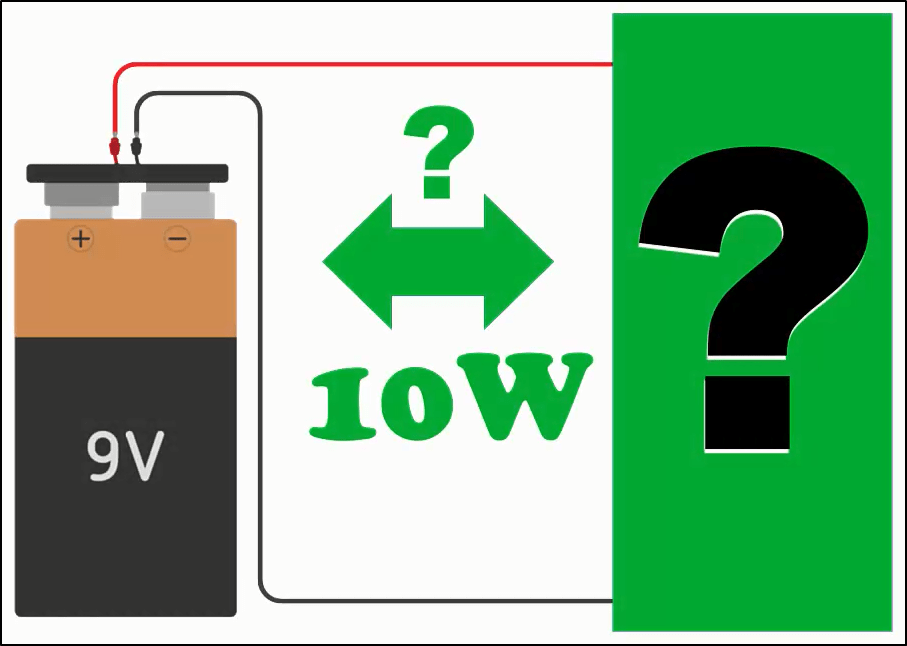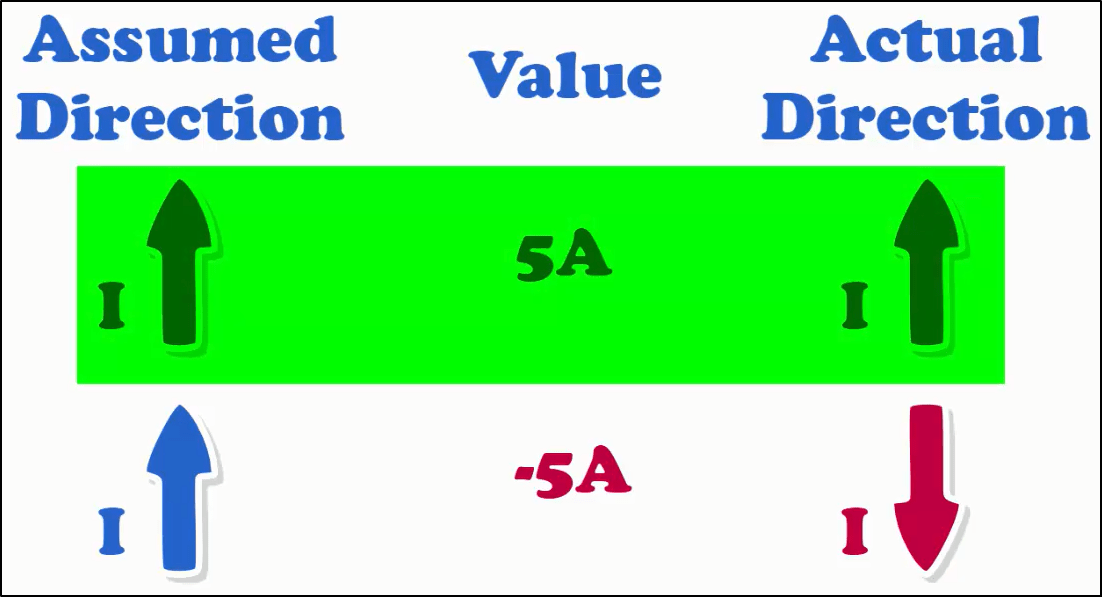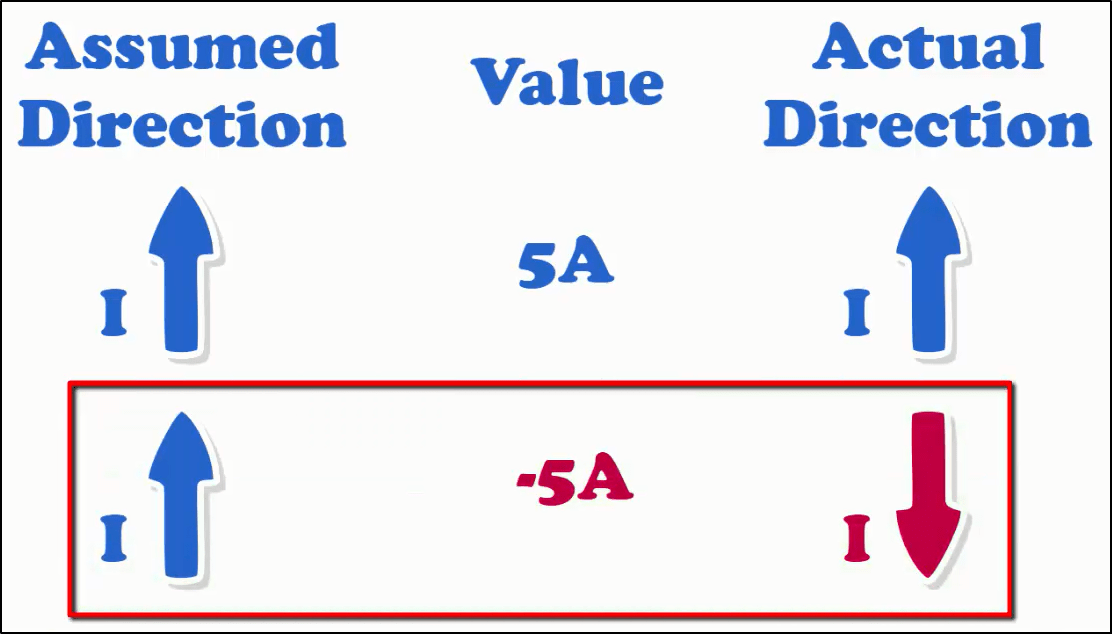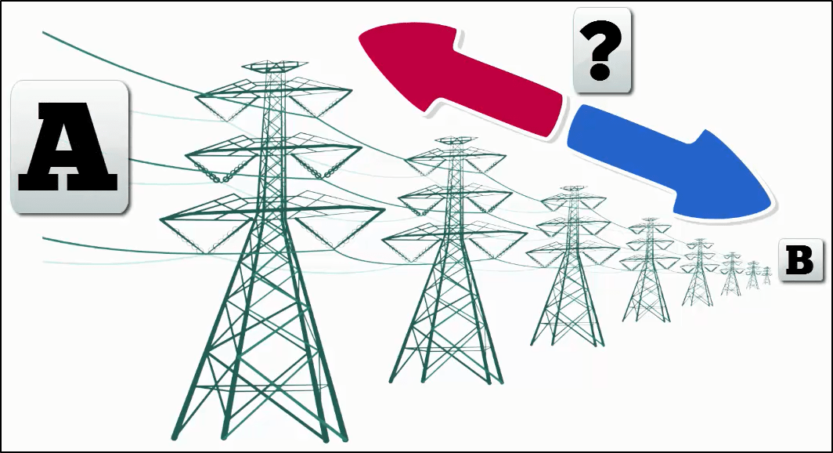The following video contains excerpt from a consultation session I had with one of my students. The audio used in this video clip is an actual session audio. I have modified the slide to protect the privacy of my student and I’ve added a few graphics and schematic diagrams. Feel free to watch the video or scroll below if you prefer reading.
Before we engage in talking about assumed and actual directions or polarities, let’s first review a bit of Electrical Engineering terminology:
Electric Current has a Direction and it flows through an Element
Electric Voltage has a Polarity and it is found across an Element
Element can be a source, a load or any other part of an electric or electronic system. Power Flow is similar to electric current – it also has a direction and it flows along a transmission line (or power is transmitted over the transmission line). Sometimes, we say that power flows from a source and towards a load.
Currents, voltages and power flows are all electrical quantities and we express them with certain values. Those values are positive most of the time, but sometimes can also have a negative sign. The sign of a quantity’s value is key to interpreting an actual direction or a polarity of that electrical quantity.
However, the first thing we must decide, is assumed direction or polarity (i.e. we “assume” it). Bear in mind that assumed direction or polarity is sometimes explicitly stated while at other times it may only be inferred. Of course, assumed direction is related to an electric current or a power flow, while assumed polarity is related to an electric voltage. We are free to assume either direction we like. We are also free to assume whichever polarity we like for voltage. But once an assumption or a choice is made, we must stick to it for the entire duration of the calculation.

The value of an electric current or a voltage is what we eventually obtain as a result of our calculations. The value can be positive or negative. Either positive or negative value by itself means nothing without knowing the assumed direction or the polarity.
If we just say the power flow of a battery is 10 Watts, it is unknown whether the battery is being charged or it delivers power to the load.
Thus, an assumed direction or polarity must always accompany the value of a quantity. Only then, the value can have a meaning. Statement that battery is being charged with 10 Watts, or that battery delivers 10 Watts, is complete. Here, the words “charged” and “delivers” represent assumed direction of battery’s power flow.
The following two diagrams demonstrate the two possible directions of a battery’s power flow:
- The DC source has a voltage of 11.8V, which is higher than the voltage of a 9V rechargeable battery. Consequently, the power flows from the DC source, towards the battery and battery is being charged (the battery absorbs electric power)
- The battery powers the light bulb and power flows from the battery, towards the light bulb. The battery delivers electric power, while the light bulb absorbs electric power (to give out the light)


As we already mentioned, just the value by itself, say current is 5A, is not enough. Assumed direction, or in which way the current flows, must be stated as well. The current can flow to the left or to the right, upwards or downwards… Thus, if an assumed direction was not stated, we wouldn’t know it and the value would not mean much.
The statement: Current flows upwards and it’s 5A, is a complete statement.We have both an assumed direction and the value of the current flow. Now, we can analyze the value and determine what is the actual direction of the current:
- If a quantity has a positive value, its actual direction matches its assumed direction
- If a quantity has a negative value, its actual direction is opposite from its assumed direction
Of course, a similar analysis can be performed for a polarity of a voltage.
In the case above, since the value of the current is a positive number, that means the current really flows upwards (as it has been assumed).

When calculated value of a quantity is negative, it simply means its direction or a polarity is opposite from what we assumed. While in day-to-day life, we rarely need to deal with negative values, in Electrical Engineering that is quite a normal practice. As we will discuss below, if we really want to avoid negative values, all we need to do is flip assumed directions or assumed polarities of negative quantities!
An example of a negative value of a current is illustrated above. If we say: Current is flowing upwards with a value of minus 5A, that means the current is really flowing downwards.
It should be mentioned that sometimes we don’t even care about an actual direction or a polarity of a quantity. We simply assume direction or a polarity, then we calculate the value (we obtain either positive or a negative number) and we stop there. Engineers can equally well deal with positive or negative values.
There are cases when we consistently obtain negative values for certain circuits or scenarios. It then makes sense to adopt opposite assumed directions or polarities and consequently flip the sign of values we obtain. That way, we end up dealing with positive values, which may be a preferred way, especially for non-engineers.
Just as a reminder, assumed direction or a polarity is also called a reference.
Thus, when we don’t want to deal with negative numbers, we change the reference (we flip it). Then the same thing becomes positive! The value of a quantity remains the same except for its sign, which changes into an opposite one.
Great example of flipping the reference in order to turn negative values into positive ones, is reactive power flow of capacitors (or capacitor banks). There are no issues with inductors as they consume reactive power. We always obtain positive values for reactive power consumption of inductors.

However capacitors do not consume reactive power, at least not a positive value of reactive power. Since capacitors actually generate or deliver reactive power, we change the reference of reactive power flow of capacitors – instead of talking about capacitors consuming negative reactive power, we change the word “consume” into “deliver”. That is equivalent to changing an assumed direction of capacitors’ reactive power flow. Consequently, we obtain positive values and we simply say that capacitors deliver reactive power.
In ordinary life, we sort of visualize that mountains are high and we visualize that oceans are deep. Then the assumed directions are known. But what can we visualize about a power flow on a transmission line? Which power flow direction do we assume?
We can say that a transmission line has two terminals and we can designate them as points A and B. Does the power flow from A to B or does it flow from B to A? One terminal is not better than the other, so we basically don’t visualize anything.
Because most of the times, we don’t have an implied reference in Electrical Engineering, we have to make sure we always define the reference.

A battery is normally understood as a source and implied reference is away from the battery. Thus, the battery delivers electric power and an assumed direction of power flow is known.
However, when battery is being charged, we also express the value of battery’s power flow as a positive value. In this case, we actually flip the reference (from “delivers” to “being charged”). Bottom line is, we tend to adopt references to make things positive whenever we can.
This article is Part 3 of the Power Sign Conventions triad of articles. It is recommended that you read all three parts to get a better grasp of how we end up with positive and negative signs of various Electrical Engineering quantities. You can find the first two articles by following the links below:
Alternatively, you can watch the full Power Sign Conventions video that contains all three subtopics in a single video (still not too long – just a little over 9 minutes):
I help my students get a clear understanding of various Electrical Engineering concepts. A question of power sign conventions comes up quite often and I know from experience that students get easily confused with varying signs encountered in engineering.
Hopefully, you’ve learned something new today. If you’d like to become my student, you can schedule a consultation session of your own. Just go to eeSasha.com/help and pick the duration and time for your one-on-one consultation session!




